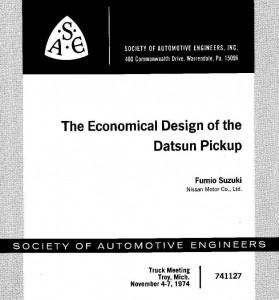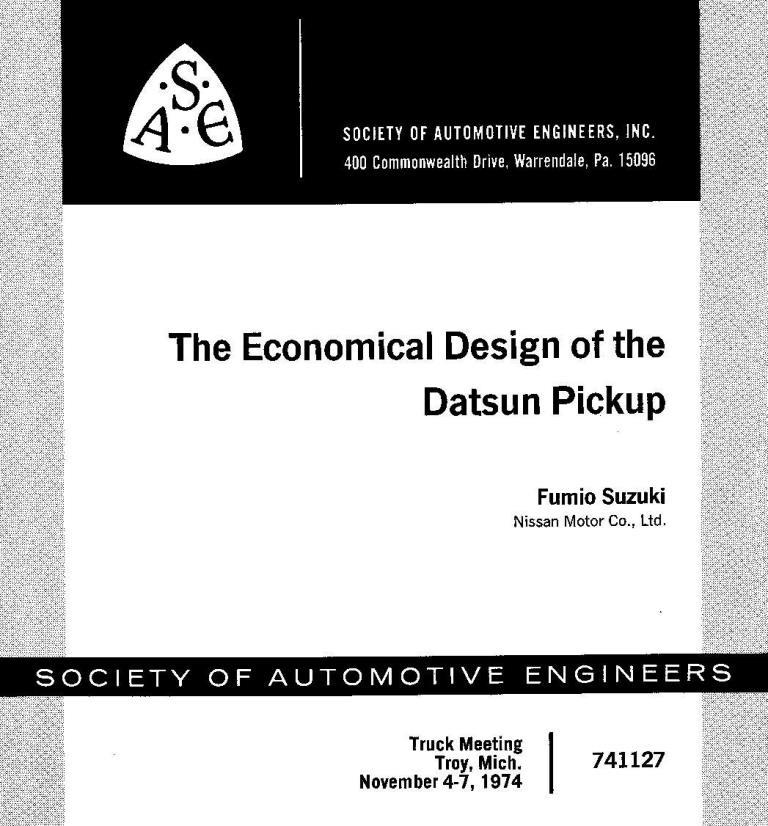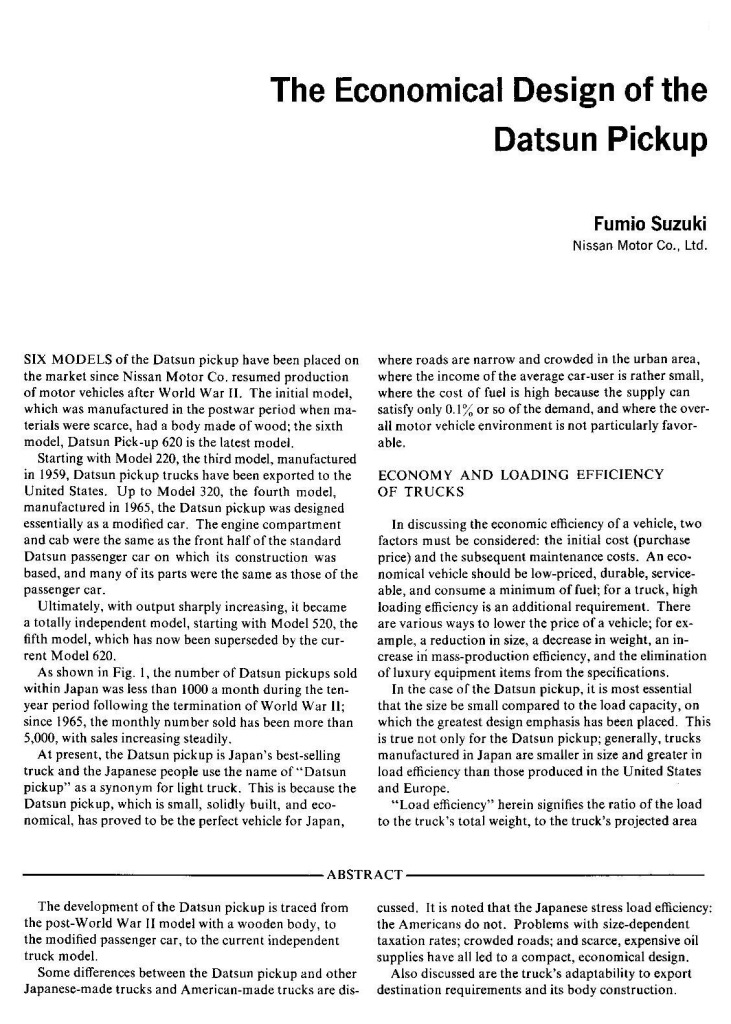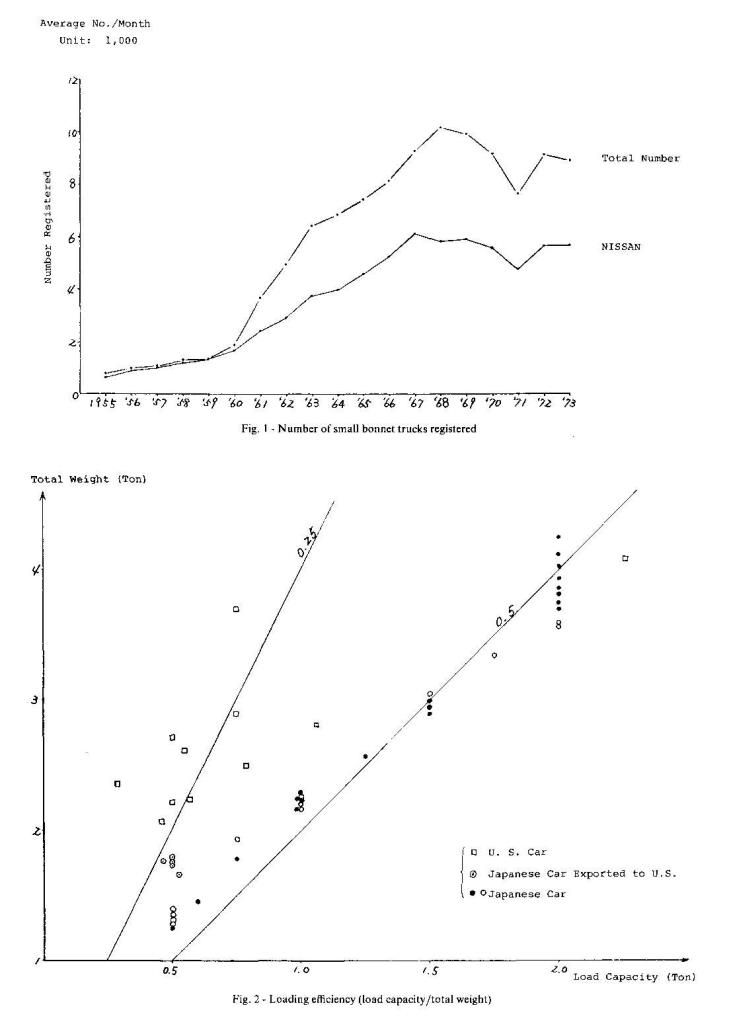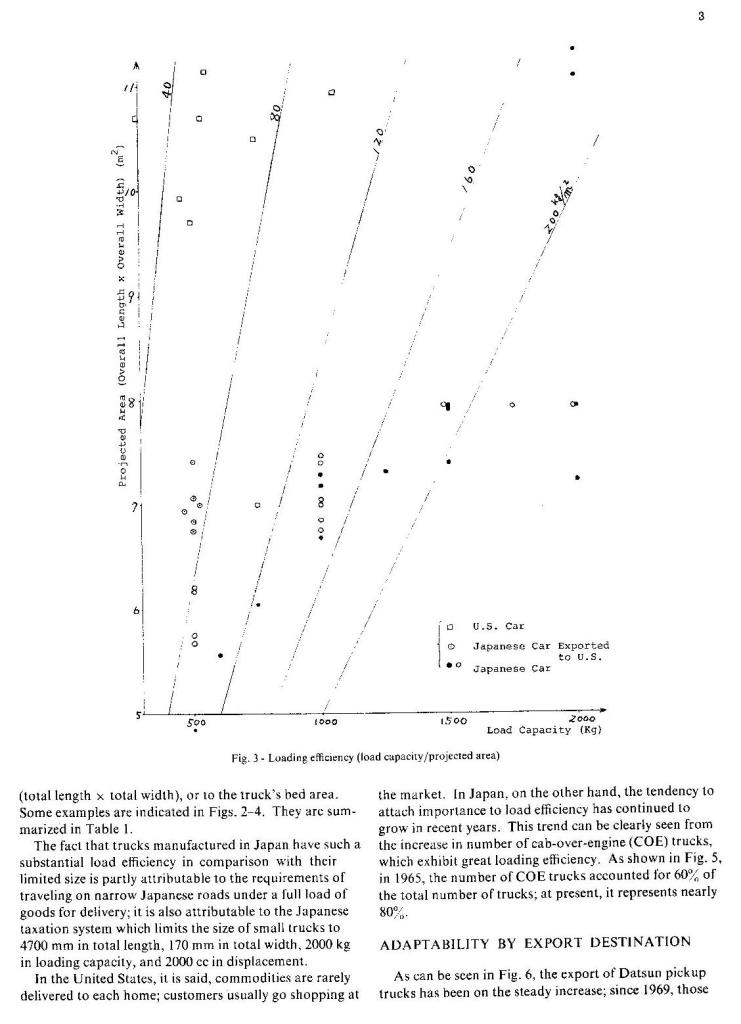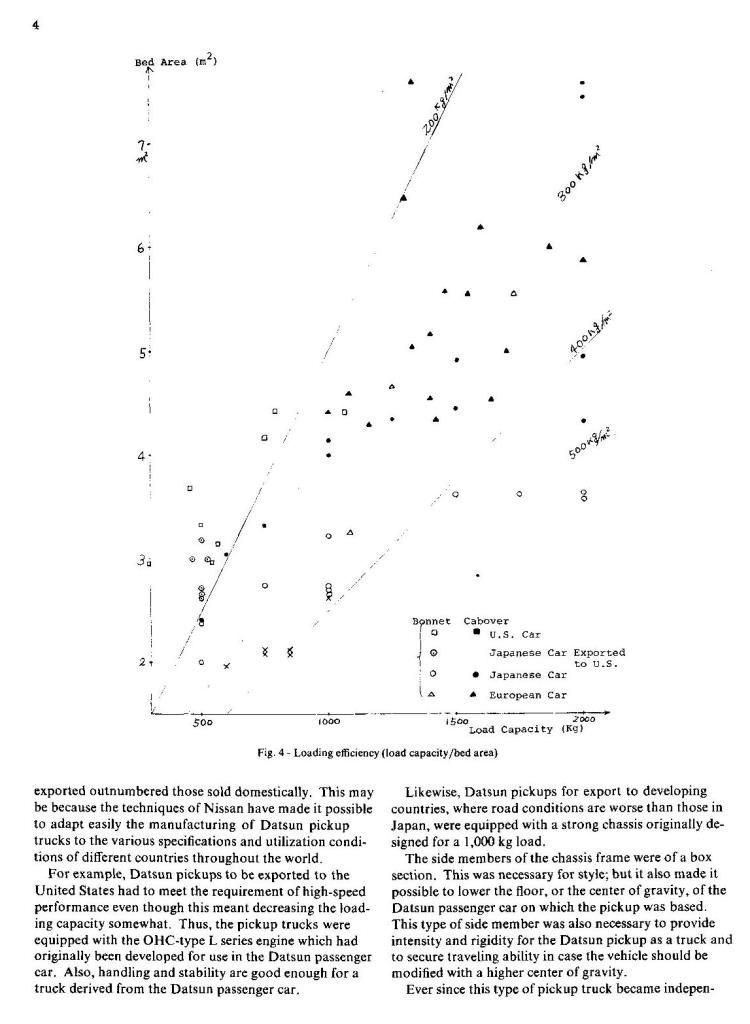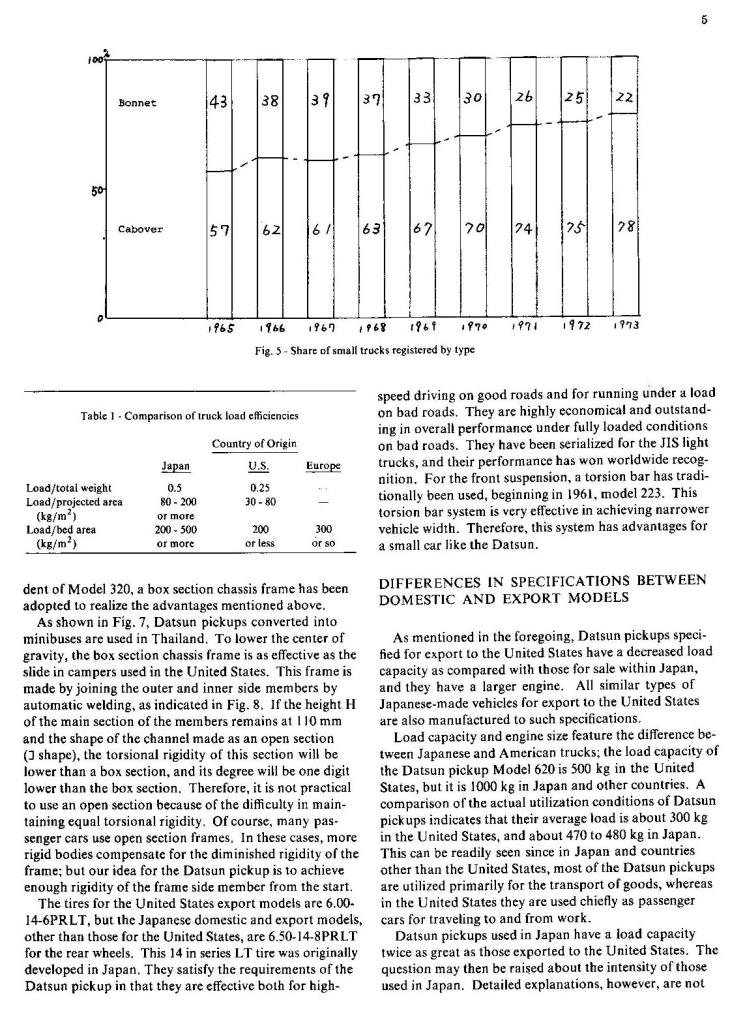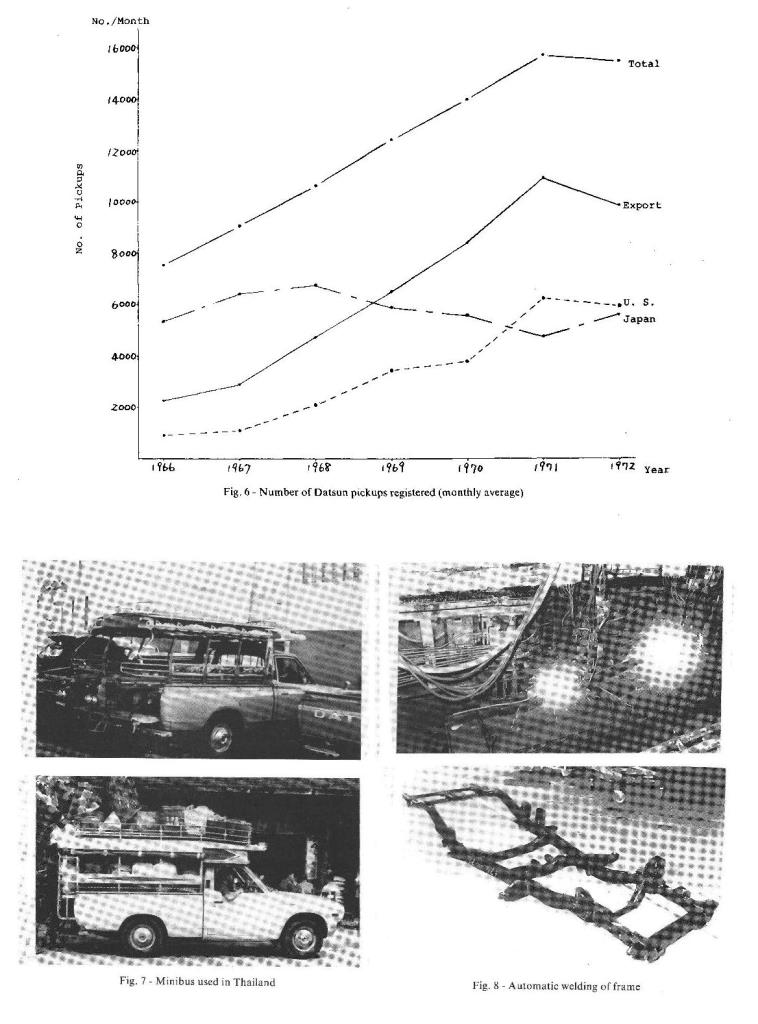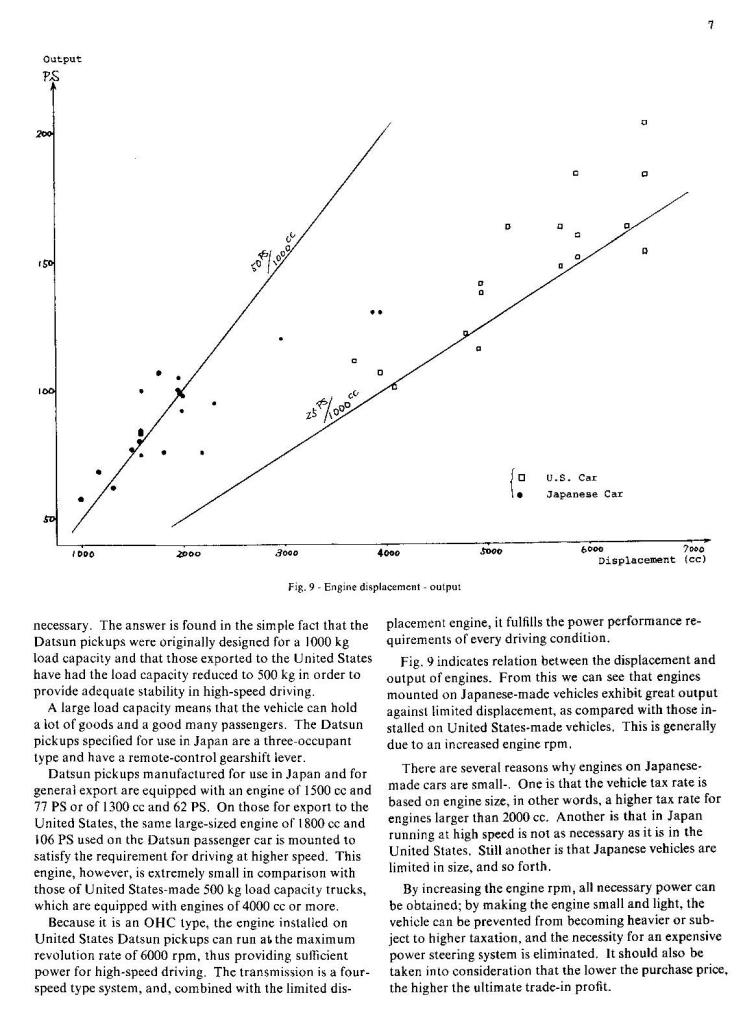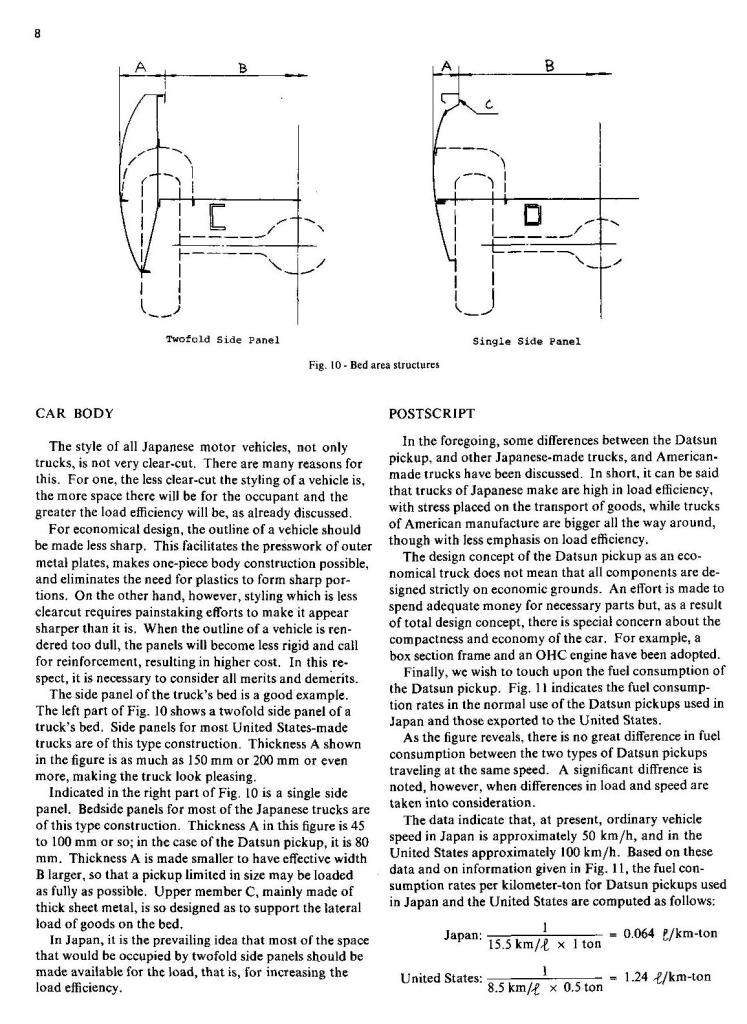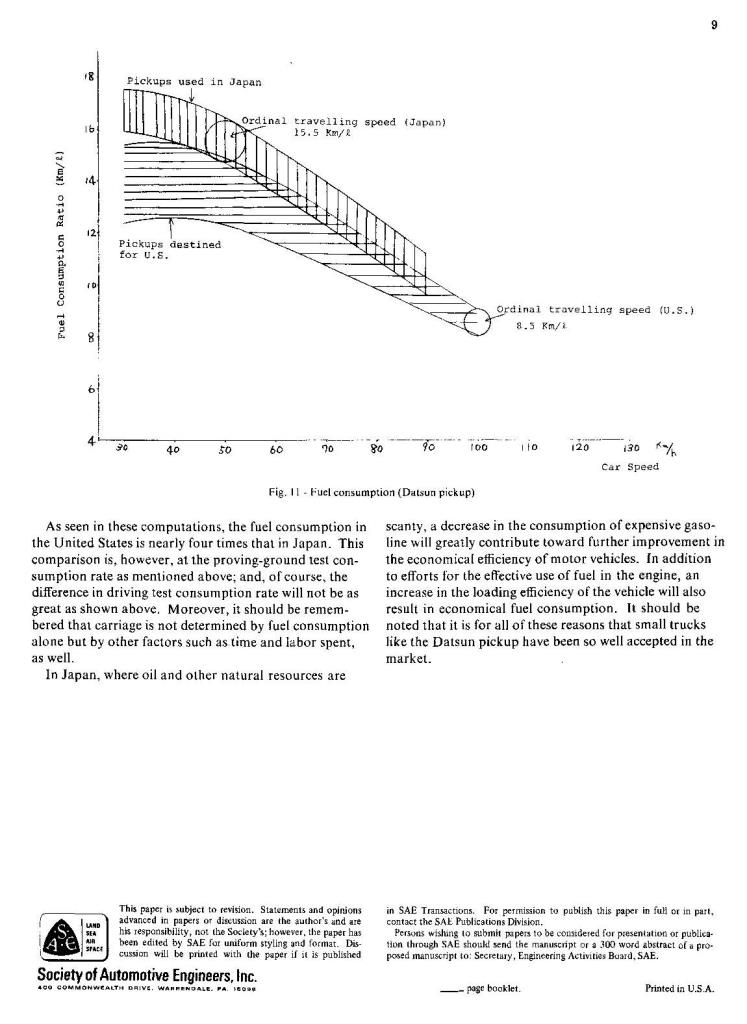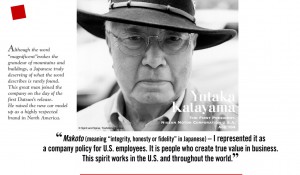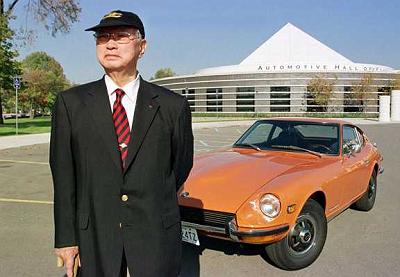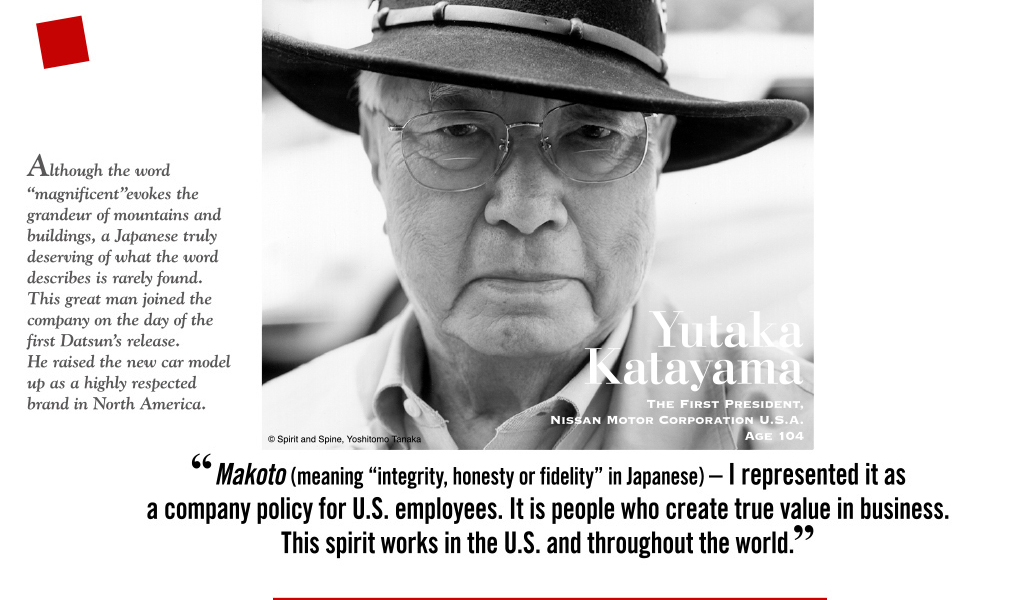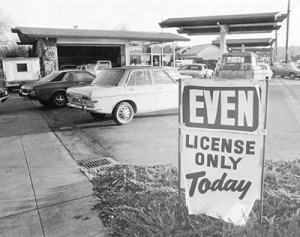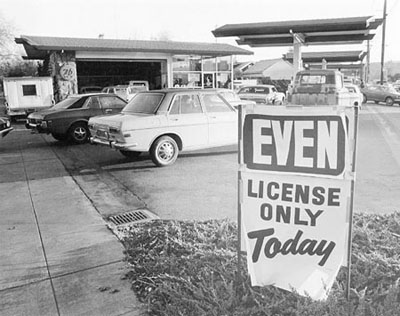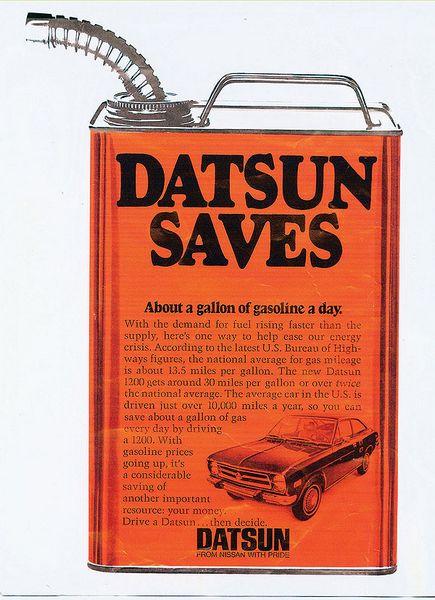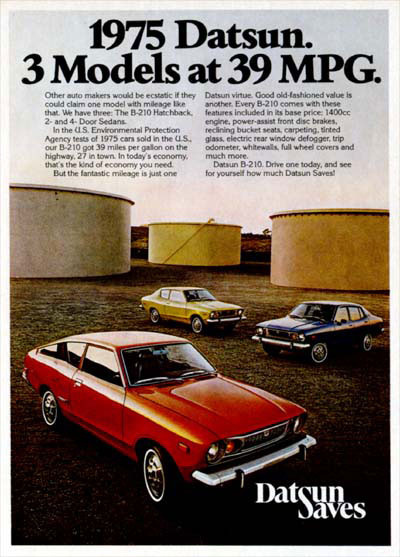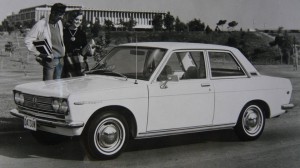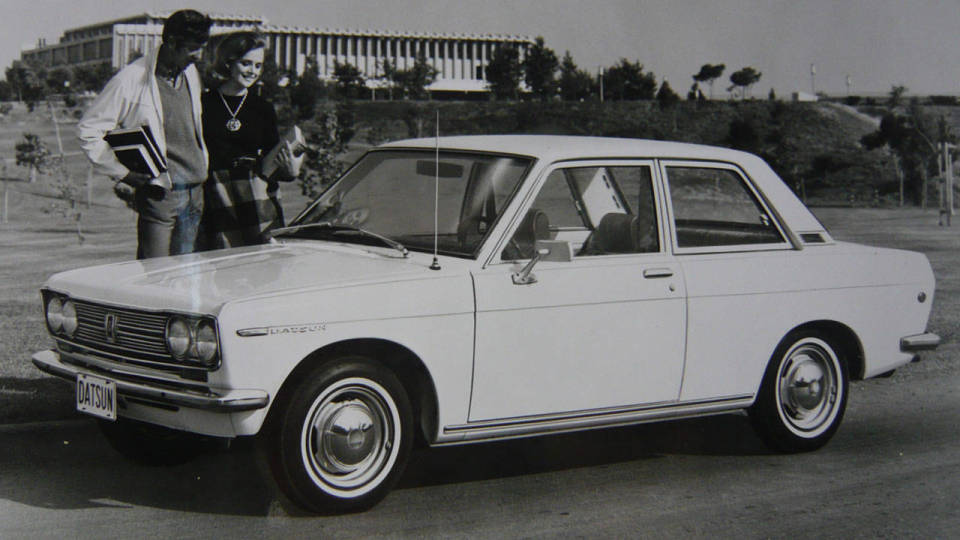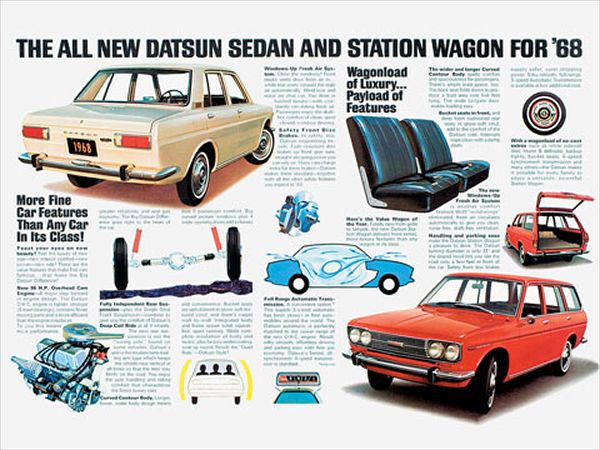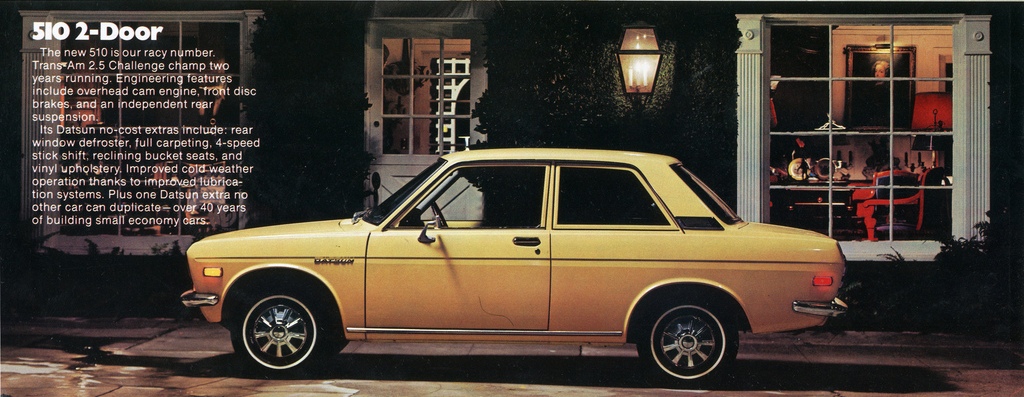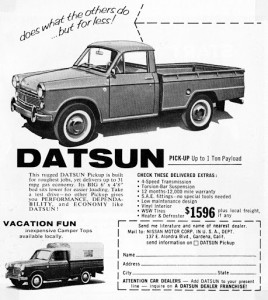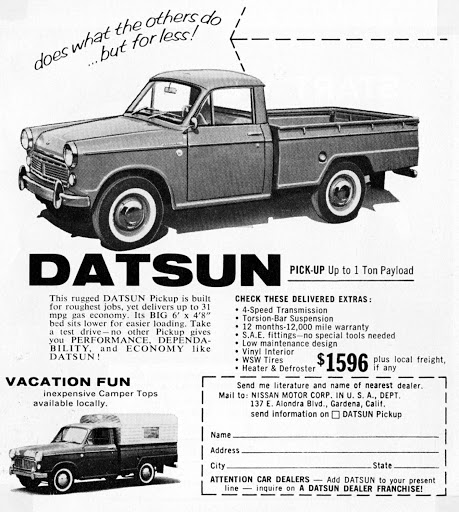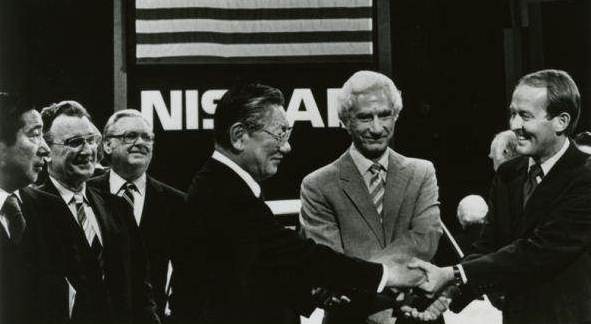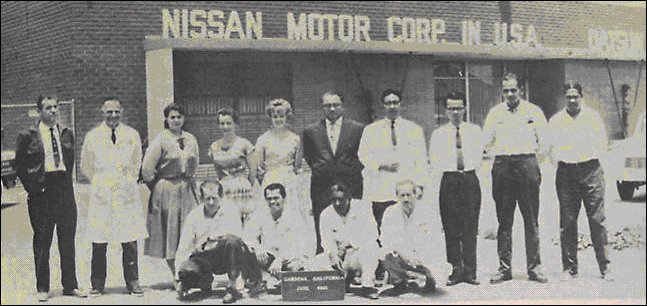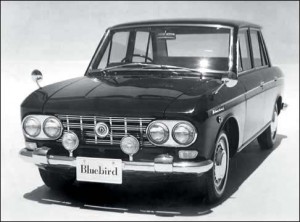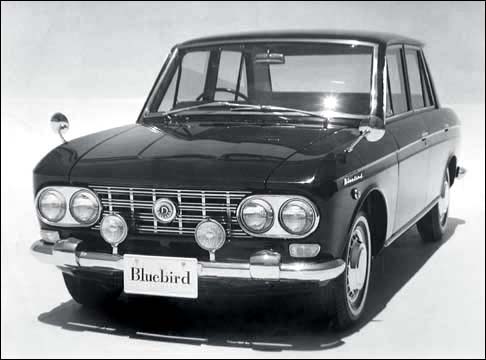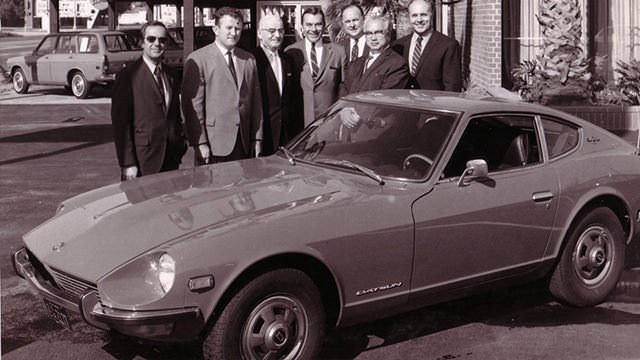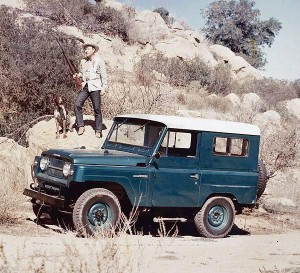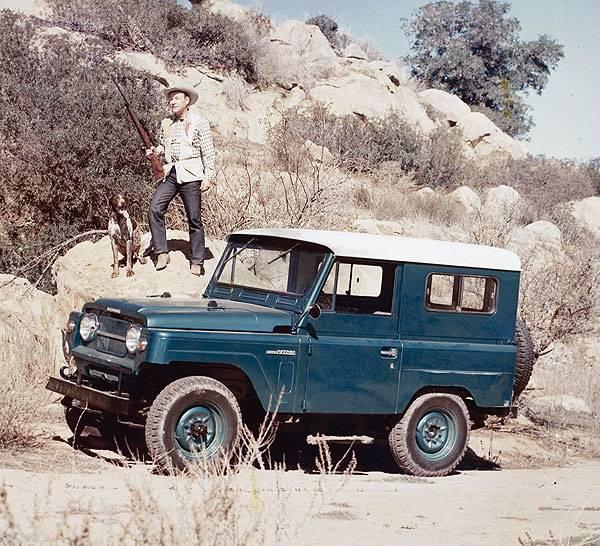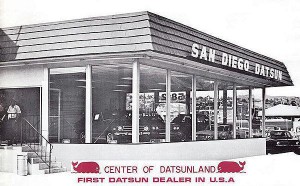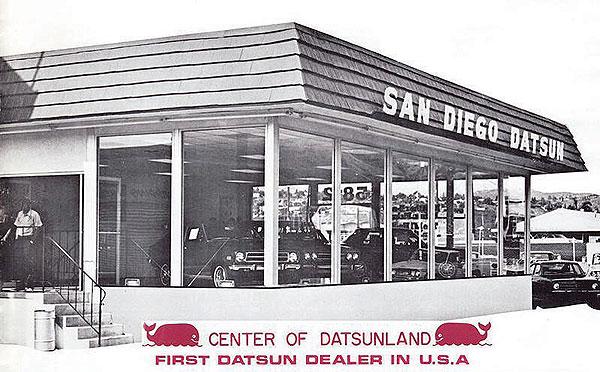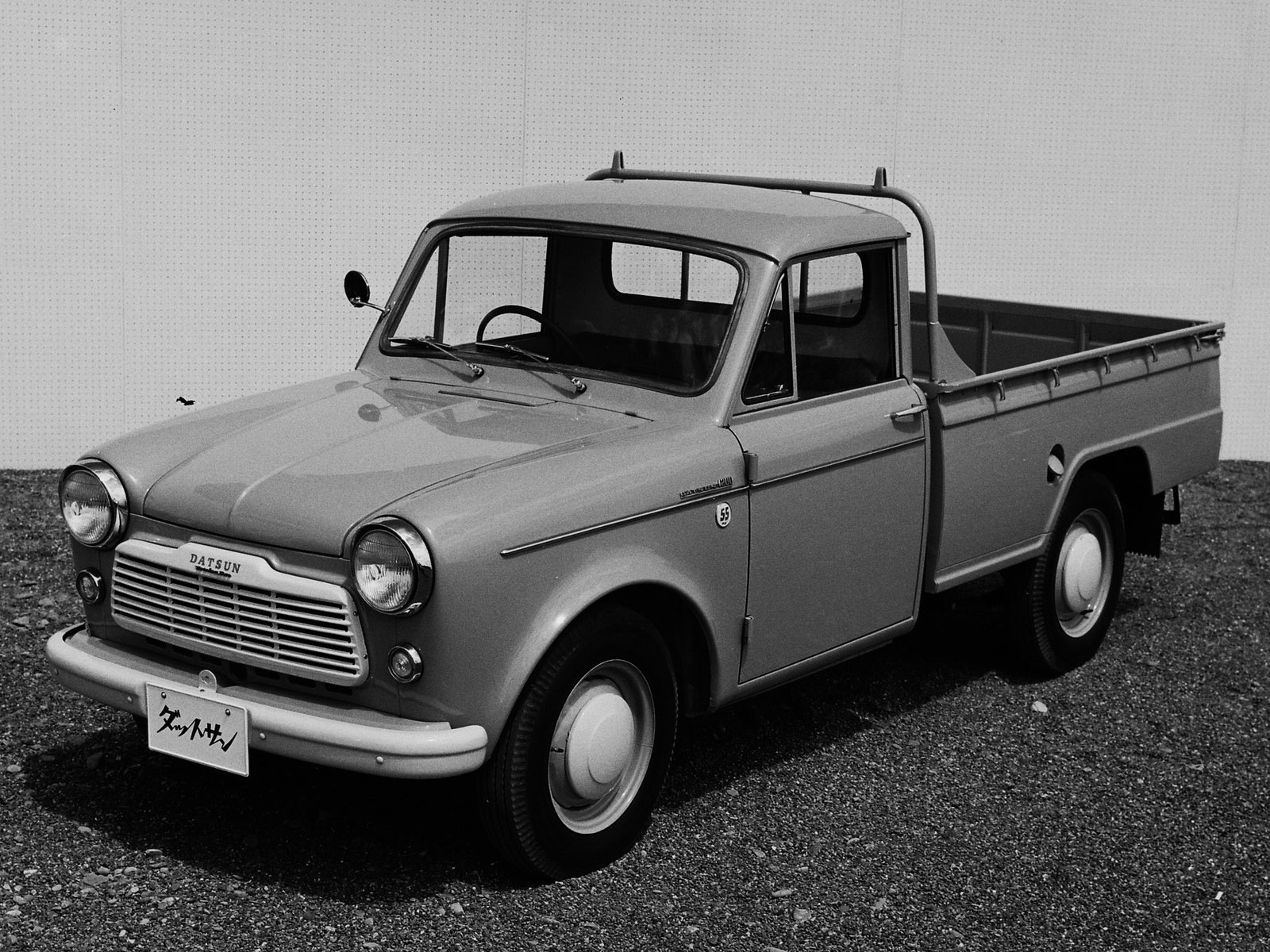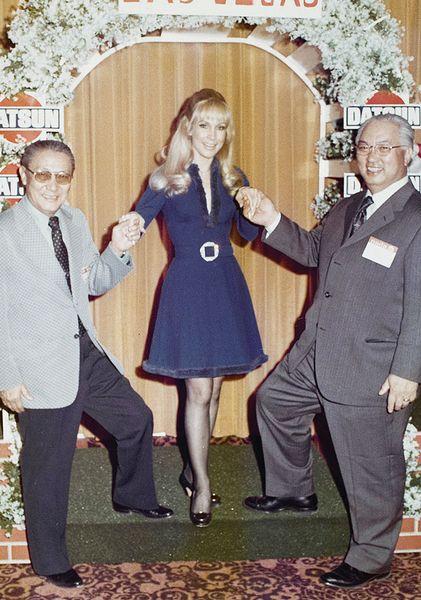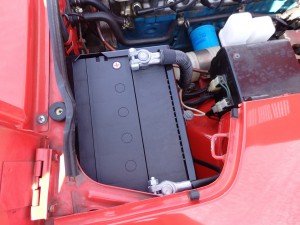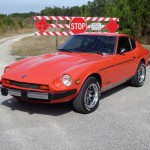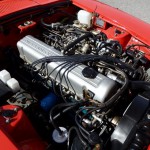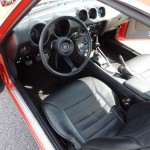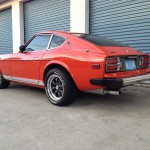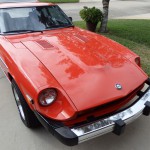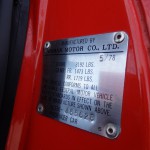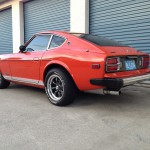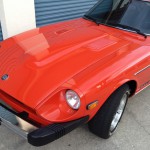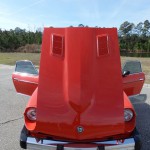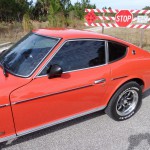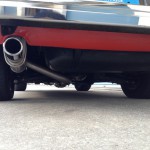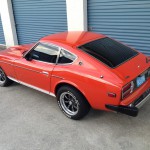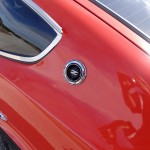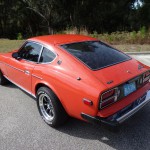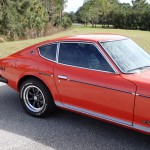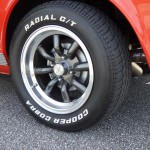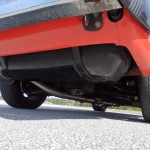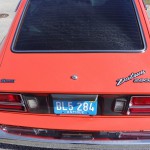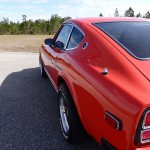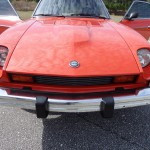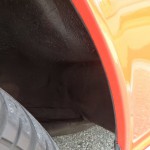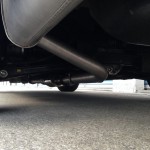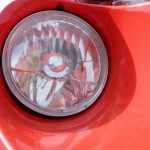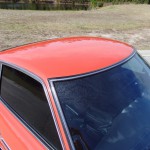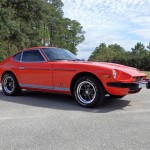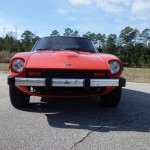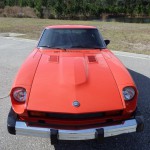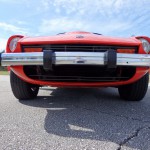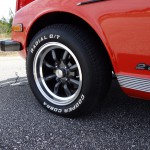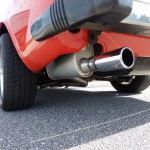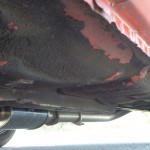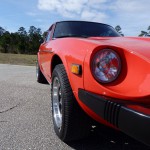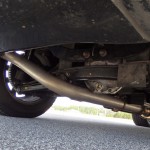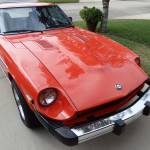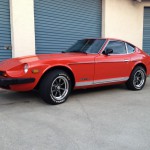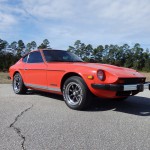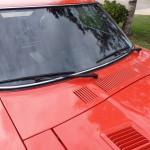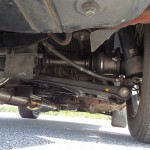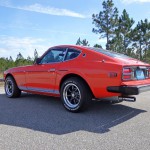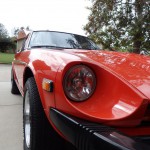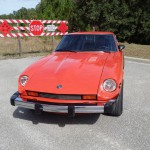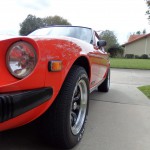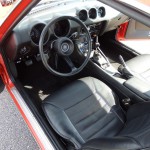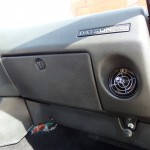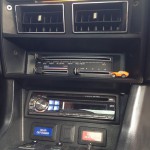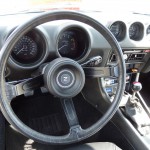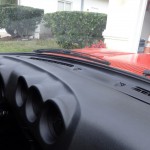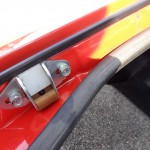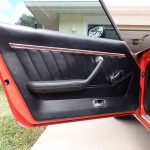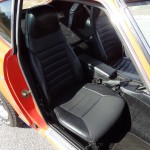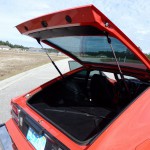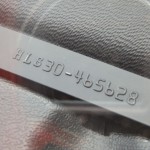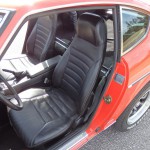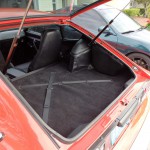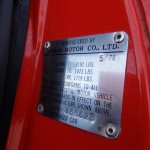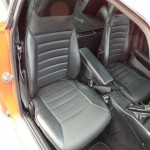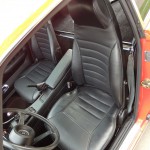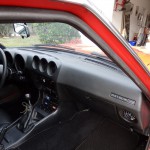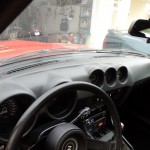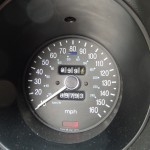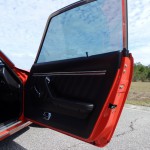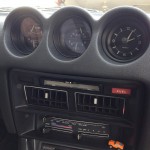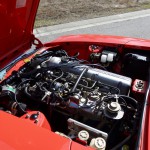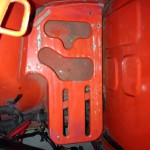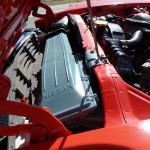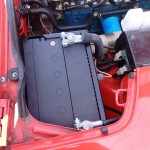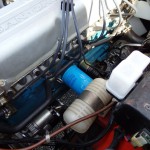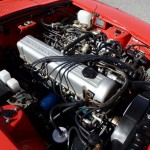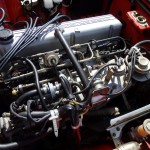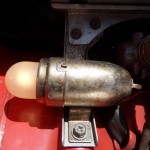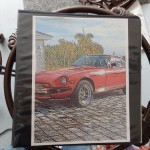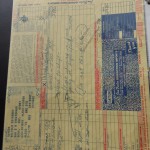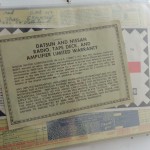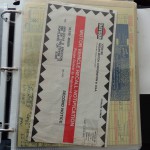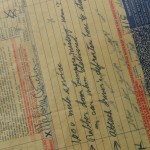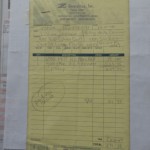How Datsun Discovered America – Part 8
Katayama himself knew that from their point of view there had been too many American articles about this wonderful entrepreneurial Japanese businessman in Los Angeles who had made Nissan such a success, who had become so Americanized. and who was, it seemed, an honorary sheriff in half the counties in Texas. Too many people had said that it was Katayama’s company and that the 510 was Katayama’s car. All that, he knew, would hurt in Tokyo, but he did not care. He knew that they thought he had gone too American, that his clothes were considered too sporty and his manner too informal, and that every request he made to modify the car, no matter how valid, and no matter that Tokyo followed up on it, would eventually help to undo him back home. There he was seen as a spokesman for America against Japan, a man who had been implicitly critical of the existing Datsuns. He had had no illusion about his position from the start. “Everything I do right here,” he told his closest American associates, “will be considered something I did wrong by Tokyo.”
When he bought a house in Palos Verdes, he knew it would be held against him, that he would be charged with high living. He knew he would never be able to make Tokyo understand that whereas in Japan – because housing was so bad and perhaps because women were not a part of the business world – businessmen entertained by taking one another out for extravagantly expensive nights on the Ginza; in the United States, with its wonderful housing, Americans entertained in their homes. He paid a mere $25,000 for the house, and he loved entertaining there, barbecuing steak like an American but serving sushi beforehand. By American standards the house was very nice, but by Japanese standards it was extraordinarily grand, far grander than those in which his superiors lived at home. The house was always a sticking point. Tokyo never really accepted the idea of the house. A steady stream of high Nissan executives passed through California, looked at it, and held it against him, concluding that if Katayama had a house this splendid, he was in some way ripping off the company. When Katayama retired, his successor sold the house at a profit of about $50,000, and if he had held on a few years more, it would have been nearly $2 million.
The end for him began when Hiroshi Majima showed up in 1975. Majima became president, and Katayama became chairman. Japanese executives had arrived in the past, and Katayama had always been able to deal with them. Majima was different. He was Ishihara’s man, an executive with clout and connections. It was clear from the start that he was there to replace Katayama and that his coming signaled the close of the era. lt was an uncomfortable time for everyone. Katayama, of course, knew a lot more about America and doing business there, and Majima, just as clearly, outranked Katayama by lightyears and was under orders to take the company back from him. Majima did not speak English, and to the Americans at headquarters his manner seemed chilly and evasive. It was hard to get a quick and clear answer from him. He was not comfortable with Americans, only with other Japanese, and he brought more and more of them into the Los Angeles office. For some of the Americans it was their first real recognition that they were working for a Japanese company.
Katayama knew his time was running out. He had stayed on in America past retirement anyway, and now Tokyo was catching up. In early 1977 he received a cable imperiously summoning him home, without explanation. It was as if he had suddenly disappeared. On arrival in Tokyo he was informed that he had retired a few days earlier. His friends back in Los Angeles did not know what was happening but feared the worst. Mayfield Marshall, probably Katayama’s closest friend in the company, cabled him in Tokyo. “Hope they give you more than a gold watch,” he said. A few weeks later Katayama returned. He looked at Marshall and held up his wrist. On it was a gold watch. It was about the only thing they gave him.
He did not particularly want to return to Japan and for a time considered staying on in America in a different business. But he did go back, and in Tokyo, Nissan wanted to hide him. It was almost as if he had come home in disgrace. There was no reward for the job he had done. He was not put on the board. He did not make vice president. He was given a minor job in an advertising subsidiary – “I was farmed out,” he wrote his friends in America. “At least I am beyond the reach of the union.” Nissan tried to minimize any publicity in Japan about the role he had played. When American writers wanting to talk about the American operation showed up, the Nissan public relations people would come up with a short list of names, and though Kawazoe’s was on the list, Katayama’s was notable by its absence.
Not everyone ignored him: In April of 1977 Katayama was awarded a blue ribbon by MITI for his work on behalf of Japanese trade in America. That was a particularly high honor, and it pleased some of his friends back in America, for to them it was as if he had won it in spite of Nissan. But he took little pleasure in the award; to him it had a slightly bitter taste. He sensed that the Nissan people, embarrassed by his success in America and their own failure to recognize it by putting him on the board, had gotten MITI to do their work for them. It was partly a scam, he thought, and he felt oddly detached on the day of the presentation. Later he could not even remember whether or not he had celebrated with a few friends that night. A few months later, there was a party in his honor given by about 150 of his friends and colleagues; they had had to pay for the party themselves, he noted acidly.
In America, Nissan moved quickly against those who had been his nearest associates. Within a few months it got rid of John Parker, whose agency had handled the Nissan account since the first commercial.
But in a way Katayama got his revenge. For in America he had become not just popular, not just admired, but mythic. In 1983, Car and Driver, lamenting that Nissan products, though still durable, had become boring (“Nissan remains innovative only in financial matters,” the magazine noted), published a special tribute to Katayama as a human being and as a car man. By dint of a rare human vision, he had helped make a small, incompetent Japanese company an exciting one, pushing it relentlessly to produce its best. What Nissan needed most now, Car and Driver asserted, was another such man. The title of the article said it all: “WHERE HAVE YOU GONE, YUTAKA KATAYAMA?”
How Datsun Discovered America – Part 7
If the first oil shock, after the Yom Kippur War in 1973, enraged and discomfited the Americans, who suddenly had to pay more for gasoline, then it truly frightened the Japanese. For it was not some temporary inconvenience: it was a crisis imperiling their society. The Japanese economy was entirely built upon oil, of which Japan, unlike the United States, had minuscule domestic supplies. What followed was pure panic. There was immediate hoarding of nearly everything, stores were mobbed, and the government had to promise that there would be enough toilet paper for everyone. A quickie book entitled The Oil ls Cut instantly became a best seller. Companies decreed emergency measures to conserve energy; the paint ovens at most of the auto factories, for example, were redesigned so that they needed less heat. Throughout the world of business, faucets in the lavatories produced only cold water. The recovery came slowly. But it soon became clear that Japan was going to be the beneficiary of this crisis. Some Nissan executives claimed it was actually a blessing, because it had badly shaken the younger workers who had taken the company’s success for granted and had become arrogant and spoiled, and it had made them properly grateful for their jobs. Above all, there was now a greater need for smaller, gas-efficient cars.
Soon after the Arab embargo began, the people at Nissan found out that the U.S. Environmental Protection Agency had completed its first mileage test and that the Datsun 1200, the company’s smallest car, one that had been around for several years and that the executives were anxious to phase out, had scored the best mileage. John Parker and Maytield Marshall, sensing that a very good commercial might be made from this, took a crew and started filming the 1200 going from California to Maine, where it finally drove up to a lobsterman standing amid a pile of lobster pots. A team of independent authorities went along to check how much gas the 1200 used. The EPA had rated it at thirty-three miles to the gallon; the independent officials certified that on this trip the 1200 had gotten forty. The last line of the commercial was simply: “Datsun Saves.”
Even if there were few 1200s left to sell, Datsun was able to push its low-cost replacement, the 210. Fifteen years of hard work and constant upgrading of both performance and quality were now paying off. The Germans, because they had stayed with the Beetle, appealed to only a fraction of the new market and were unable to exploit the new opportunities. For the American auto companies, production in 1974 was down 23 percent. In the beginning, the Japanese had trouble, too, in finding the oil to keep their factories going, coping with depleted steel production, and shipping the cars they were making. But in due course the first oil shock allowed the Japanese to solidify their position in America. The real benefits came in 1975. That was the year Toyota passed Volkswagen as the leading import car. VW fell behind Toyota 268,000 to 284,000 and was only 15,000 units ahead of Nissan. (ln fact, Nissan was some 67,000 vehicles ahead of VW if truck sales were included.) Even more significant, imported passenger cars went to 18.3 percent of the market in 1975, and more than half of those cars were Japanese.
Yutaka Katayama watched this startling success and knew that it marked the end of his freedom. As long as Nissan America was small, profitable, and making progress (but not too much progress), he was relatively safe in his job. But, if anything, his growing accomplishment and the considerable publicity he was receiving were reminders back home that he was getting out of control and accepting credit that was not, it was felt, rightly his. He had no sponsor in Tokyo, no one to speak up for him. Over the years, as he had begun to do well in America, friends had begged him to go see Ichiro Shioji, the powerful Nissan labor boss, during his visits to Tokyo and pay homage. The phrase they used, for in the old days the labor office was right across the river from the old Nissan headquarters, was “go across the bridge.” Shioji was susceptible to courtship, they said; the relationship could still be patched up. But Katayama stubbornly refused to try. His East Coast counterpart, Soichi Kawazoe, was not doing as well in sales, but he had maintained his strong connection with Shioji and thus was still well thought of. (Kawazoe, Katayama once said, had always had a gift for playing poker with the right people.) Finally, somewhat reluctantly, on one trip home, Katayama went across the bridge to see Shioji. Shioji was an hour late for the meeting. In a country where people are extremely prompt, there was no doubt of the lesson Shioji was teaching Katayama.
As the American operation became increasingly successful, more and more bright young men began to arrive from Tokyo to help Katayama. He was extremely wary of some of them. “This one,” he might say, “is here to spy on me. Watch out for him. Tell him nothing.” At first some of Katayama’s American associates thought he was being a little paranoid – later, as they learned more of the complexity of the company’s politics, they were not so sure. When Kawamata or Ishihara showed up in America, they seemed cold and disapproving, and Katayama, in turn, usually so exuberant, became reserved. The Americans in the office thought Katayama was doing a brilliant job, and they found it odd that when they took these visiting officials out to some appointment and, making small talk, mentioned something about how well Mr. K was doing, the visitors never responded, never said a kind word about him. For Katayama had been much too visible in America, had taken too much pleasure in what he had done, had not played the role of the modest Japanese businessman who owes all to his superiors. They would not lightly forgive him for that.
Next – Datsun’s success comes at a price: How Datsun Discovered America, Part 8
How Datsun Discovered America – Part 6
Katayama finally got an extraordinary break. In the fall of 1965 a man named Keiichi Matsumura joined Nissan. He came over from the Ministry of International Trade and Industry, where he had been MITI’s man on automobiles. There was a tradition of this in Japan. A high MITI official, his career completed, would go over into the industry that he had served – the Japanese called it amakudari, “descending from heaven.” In the spring of 1966, Matsumura visited and he and Katayama began a series of conversations about problems the company was having. Katayama knew immediately that this was his best chance to upgrade the engine, so he pushed as hard as he could with Matsumura about the need for the 1600cc. At the end of their first long session Matsumura said, “Write a letter for me, and I will sign it.” Then he changed his mind. “Make it a telex,” he said. “There’s a board meeting coming up soon.” The next day a long, impassioned telex message, which everyone at Nissan knew was from Katayama, went out over Matsumura’s name. Almost immediately Katayama got an angry message from Yuji Shimamoto, who was a key man in the export department. Shimamoto had been his chief tormentor in the past and had strenuously fought him on his repeated requests to upgrade the engine. This time Shimamoto was complaining bitterly and publicly of Katayama’s failure to ask him for the 1600 cc engine any earlier. That night, April 8, 1966, Katayama wrote in his diary: “I do not know how many times I have asked the head office for more [engine] power. In fact l have been begging for it, but we always had to shut up because their answer was that it was impossible. Now Shimamoto tells me that everyone including Kawamata was shocked by Matsumura’s telex. It is we who should be shocked, not him.”
A few days later Kawamata arrived in Los Angeles with his wife. Katayama was nervous that the president might be angry with him, but Kawamata seemed not to mind the telex at all: indeed he affected to take it as a normal request. It was, of course, immediately approved, and the 1600cc engine went into production, which made it ready for the new 1968 model called the 510. It was a remarkable car, in any real sense Yutaka Katayama’s car, a personal victory of exceptional magnitude in any auto company and particularly in a Japanese one. The 510 marked the beginning of the end of the Japanese small car as a clumsy, flimsy econobox. It was the fulfillment in that sense of Katayama’s vision, of taking the best of modern European engineering and marrying it to Japanese manufacturing expertise.
In the months when the car was in its final engineering design, Katayama was on the phone to Japan constantly; one of his American associates thought he was more like an expectant mother than an auto executive. He went sleepless the night before it arrived, and when the ship was finally docking in San Pedro he was more nervous than anyone had ever seen him. As soon as the first one came off the ship, he himself drove it out of the parking facility. “Finally!” he exclaimed to the friend riding next to him. “Finally they did it! I thought it would take ten years, but they did it in seven!”
For the first few months he was like a kid with a new toy. He made everyone drive it, first his colleagues at the office, then journalists, then anyone who walked near the showroom. He loved the car, and it was inconceivable to him that anyone who touched it would not be equally excited. In essence, as one high Nissan executive admitted at the time, the 510 was a brilliant knockoff of the BMW 1600, the main difference being that the BMW cost roughly $4,000 and the Nissan 510 about $1,800. The 510 had four-wheel independent suspension, an overhead camshaft, and a 1600 cc engine with 96 horsepower. It was very strong, well put together, fuel efficient. It was almost immediately a hot car. The professional auto magazines were unusually enthusiastic. Car nuts loved the new Datsuns. Dealers could not keep them on the floor, and for a time there were the inevitable charges that some dealers were taking bribes in order to save cars for customers. In Detroit, few of the people at the top of the auto companies took the 510 very seriously, though among the engineering people there was a sudden realization that the Japanese could be more than functional, they could be good.
ln 1971, Datsun jumped into third place among the importers, with 150,000 pieces sold. The 510 alone sold more than 300,000 pieces in five years, and to anyone paying attention it was a sure sign that the Japanese had arrived. It had always been a part of the basic theology of Detroit that it could roll back the foreigners anytime it wanted. The idea had always been that the imports could have 5 percent of the market, nothing more: if the foreigners went above that magic figure, Detroit would strike back. But in 1968 the figure neared 10 percent, with VW getting 54 percent of the total import market. Detroit executives were not really worried, they were making too much money for that. All they had to do whenever they wanted, they assured each other, was tool up some small cars. Soon the Detroit companies were bringing out their new compacts and subcompacts; Ford had the Maverick in 1969 and the ill-fated Pinto in 1970, and GM had the equally ill-fated Vega in 1970. But the import sales did not, as in the past, collapse. What Katayama and others had suspected was becoming true. Bonds of loyalty were being severed. It was no longer, as in the past, just an issue of size and price. The issues now were also quality and integrity.
Next – The oil crisis vaults Datsun to success: How Datsun Discovered America, Part 7
How Datsun Discovered America – Part 4
In 1961, the year after he arrived in America, Katayama estimated that it would take until 1970 to get the right car for the American market, one with at least a 1600cc engine, real performance, and some style. He was off by a few years. The first really viable Datsun was the 1968.
What saved the company in the meantime, though Tokyo was loath to admit it, was Nissan’s little pickup truck. It was small, it was inexpensive, and it exploited the single Japanese automotive strength – durability. Even more significant was the fact that, as Katayama soon learned, in western America and especially in California the pickup had a function different from the one it had elsewhere. Here it was both truck and passenger vehicle. Many Americans worked their small patches of farmland for an hour or two in the morning before driving off to a factory job. Some who no longer worked on the farm kept a pickup nonetheless, as if to sustain their sense of self. Other, older Americans preferred pickups because they held up well; younger ones liked them because of the image of ruggedness they projected. People who owned small companies, maybe just one or two employees or maybe just themselves, needed a pickup for work and liked the Datsuns because they were cheap and tough. The pickups sold right from the start. They sold without advertising. They sold because the men and women who came in to look at them could sense that they were well made. They sold because the word of mouth was phenomenal. These funny little trucks, owners told their friends, lasted forever, and nothing ever went wrong – they were a real buy. The sales were so good that Nissan’s West Coast office soon had twice the total volume of the East Coast’s. ln 1963, for example, a critical year when Datsun was just beginning to get a foothold in the American market (late that year it moved into the top ten importers in terms of monthly sales), the western division outsold the eastern 2,781 vehicles to 1,151. Of the western division’s sales, 1,597 came from small trucks.
Tokyo was ambivalent about this desperately needed success. Nissan had wanted to arrive in America and be classy and sell cars and make a reputation; it had not wanted to come and sell trucks. So when Katayama kept talking about the need to improve the trucks, management refused to listen. Katayama was trying to tell the home ofice that more than half of these Datsun trucks were used for commuting, that they were, in effect, being used as cars, and that the market would explode if Nissan simply upgraded them a little. But Tokyo would not budge. A truck was a truck, and Americans had no right to use one to drive to work, particularly to offices. That was wrong of them. The trucks should be used for carting heavy goods. Katayama suggested certain changes that would permit owners to convert them rather readily for family use, and again Tokyo vetoed him. Families had no business riding around in pickup trucks. Katayama sometimes wondered how many more pickups might have sold if Tokyo had listened.
What also helped carry the company in those days was Takashi lshihara. Like Katayama, he was in a form of genteel exile, although he was a far more senior and powerful figure in the company, the heir apparent at one time to the president, Katsuji Kawamata himself. lshihara was export manager of Nissan in the fall of 1960, when he was made president of the American branch. Though for a time their purposes coincided, there was no love lost between him and Katayama. There was, after all, an ocean between them, because lshihara chose not to live in America. To Katayama he seemed just one more of that legion of insular Japanese businessmen who looked upon America simply as a place from which to take something, either knowledge or technology or perhaps some hard currency. Nonetheless, he was an extremely powerful ally for Katayama. For though they might differ on specific tactics and ambitions, and though Katayama might be more willing to adopt a truly American business style, they were as one on the central goal, which was the success of the American enterpnse. That gave Katayama a lever he otherwise sorely lacked. For Ishihara’s troubles with Kawamata notwithstanding, he was *of* the company as Katayama was not. Though his background was in finance, he was still considered more of a car man than Katayama, and his recommendations had a great deal more impact.
Once, early in the course of the American venture, during a visit to California, lshihara took Katayama to dinner. The question of Tokyo’s reluctance to accept suggestions from America hung heavily in the air. It was very hard to make Tokyo respond to America’s needs, lshihara agreed. “I am the only one who can do it, who can push it through,” he said. “and l can do it only from Tokyo. Always remember that.” There was soon ample evidence of it. Nissan had capitalized the American company at $1 million. To the Japanese that seemed an enormous amount of money. There were strict governmental limits on how much a company could spend overseas, and they were sure $1 million would last five years. But America turned out to be a terribly expensive place. Breakfast at a hotel could cost the unwary traveler several dollars. Advertising on radio and television was like burning money. Even arranging dealerships turned out to cost money, for lawyers were expensive. There was no way to save. Within two years there was only $100,000 left of the original $1 million.
ln late 1962, Ishihara went back to the board, hat in hand, and asked for another $500,000. There was no real challenge to him. The board voted the money rather readily, and he felt very little heat. But the American operation continued to be costly, and results remained hard to come by. A year later he had to go back and ask for another $500,000. This time he knew he was going against the wishes of the board. Some board members suggested he had been careless and that for so much money there ought to be more to show. Ishihara replied politely that he was still confident they could attain their objective, that Nissan could make a car that would do well in the American market. Indeed, he was willing to bet his career on it. If we don’t make it with this request, he added, I will resign from the company.
The eyes on him at the meeting, he thought, were as cold as stone, and he could even see some pleasure in the faces of some potential adversaries. The board again gave him $500,000, but it left no doubt that he was not to come back again. It was, he often reflected later, a very close call. In 1964 the company began to show a profit, about $200,000. Years later, when Ishihara was president of Nissan and was frequently congratulated on the brilliance of its performance in America, he was always mildly amused, for he knew how near they had come to failure.
To Katayama, Ishihara was simply someone in Tokyo who had responsibility for America. He was an asset, an ally, but not a colleague. To most of the people in America who had any encounter with Nissan’s American operation, it was still Katayama’s company. He was there every day, impassioned, pushing for dealers, trying to sell cars. He often delivered them to the dealers himself, because it was cheaper and because it gave him a chance to hear what they were saying. Katayama had nothing but contempt for most of the other Japanese businessmen he met in America. When some of the younger ones came to him for guidance, he scorned their insularity. Too many of them, he said, when they came to America, knew only the map of Japan, and thought only of the people in the home office, and trusted only other Japanese. Sometimes, out for a meal with a few American friends, he would spot a group of Japanese businessmen seated nearby, five or six of them, no Americans. “Look at them,” he would say, “afraid to be in America.”
Worse when Japanese like these talked about Americans among themselves, they still used the hateful Japanese word for “foreigners,” gaijin. They did not go out and get to know the market; they sat in their offices being very Japanese, trying not to make mistakes, trying not to be different. “Timid rabbits,” he thought. “I am Katayama of Nissan,” he would say when checking into a hotel or arriving at a meeting, and that was enough. He was the head of a company just as Lee Iacocca and Pete Estes were heads of companies, though of course he made about $25,000 a year, or about one-thirtieth of what they made, and soon about one-thirtieth of what some of his dealers made. This did not bother him. The other auto executives traveled with great retinues, and there was always someone to meet them at the airport, someone to get them a drink, someone to light a cigar, someone to make sure that when they went to their favorite restaurant they got their favorite table. He preferred to travel alone: he could learn more that way. He could meet people on planes and in restaurants and bars, and not be separated from them and the truth by underlings eager to protect him from the truth.
Next – Understanding the market: How Datsun Discovered America, Part 5
How Datsun Discovered America – Part 5
Katayama ventured forth constantly, savoring and studying the country. There was not a sports event in Los Angeles that he did not find interesting, and he became a devoted football and baseball fan. He was a great hiker, and there was no mountain worthy of the name in the West that he did not climb. He became a devoted fisherman and he worked the rivers and the lakes in the Pacific Northwest, fishing there with his dealers and their friends. He was a good amateur painter, and wherever he went he took his paint kit and sketched the American landscape. Each year he would take the sketch he liked best and make it into his Christmas card. By the end of his tour, his Christmas list had ten thousand names. Nothing, his friends thought, told more about him than this: Here was a man who had come from a country where there was no strong tradition of Christmas cards, and he had compiled what surely must be one of the nation’s longest lists. Few Americans understood the modern American Christmas-card ritual as well, or practiced it as personally.
He was a man, said his longtime friend and speechwriter, Mayfield Marshall, who wanted nothing less than to shrink the Pacific Ocean. Like many Japanese, he loved flying kites, and those Americans who worked for him had to be prepared to leave the office at almost any hour and fly kites (just as the Japanese who came to work for him had to be prepared to go to a barbecue for dinner or to watch a professional football game – to most of them a semibarbaric sport only dimly understood). When, after a few years in Los Angeles, he had the company buy a large plot of land off the San Diego Freeway, someone asked him what it was for. “One day it will be our headquarters building,” he replied, “but for now it is our field for flying kites. ” He corresponded with innumerable American kite freaks, and one of his proudest days was when the editors of Road & Track invited him to their offices near Newport Beach, held a kite-flying contest, and then awarded him an inscribed winner’s trophy. The trophy was of a bird dog and was supposed to go to a dog breeder, but the editors had gotten a small brass kite and stuffed it in the dog’s mouth, which pleased Katayama immensely. That day, he told his friends, the East had met the West. He was fascinated by the difference in the way Americans and Japanese flew their kites: even here, he thought, the Americans were frontiersmen, finding the wind current and charging into it as fast as they could, challenging it. The Japanese were more delicate about it; they would find the wind, turn their backs to it, and gently let their kites out.
He was a rare man. He brought a face to the Japanese mercantile presence: meeting him, Americans felt that they knew, understood, and liked the Japan that was behind his products. If he took pride in the growing success of Nissan America, it was a quiet pride in showing what modern Japan could do, and in the success he had helped bring to his dealers. He seemed to gain special pleasure from his work with them. After all, he had taken these ordinary and indeed often unsuccessful men, who had had nothing but their ambition and their willingness to take a chance, and helped turn them into millionaires. Years later, in his tiny office in Tokyo, he liked to point at a map of the western part of the United States. It was covered with little dots. “Each dot is a millionaire I made,” he would say. The dealers loved him because he listened to them and fought for them. He wanted to find out not so much what the sales were but what was behind them and how ordinary people in America really felt. The only thing about America he did not understand and truly hated and feared was lawsuits. When even a minor suit was filed, he began to shiver. Suitcases, he called them, because his lawyer was always talking about the suit and the case. “You have to save me from these suitcases,” he would say. “They want to kill me with them.”
Suitcases aside, the mid-Sixties were joyous years for Katayama. Slowly, the Datsun was getting better. At first he thought it was not jaunty enough, and he argued with Tokyo to make it sportier, but Tokyo was stuffy, regarding him as too much of a sports-car buff. He also argued with the home office over naming the cars. Tokyo kept coming up with terrible names like Bluebonnet, Cedric, and Fairlady. Katayama, who increasingly fancied himself an expert on American taste, wanted more virile names, like Lion or Tiger. The problem, of course, was that Tokyo’s names were the personal choices of Kawamata, who seemed to have some odd, hidden streak of anglophilia. Fairlady had been so decreed because Kawamata had once seen and apparently liked the musical My Fair Lady. Generally Katayama accepted his defeats on nomenclature reasonably well, but in 1969, when the first Japanese sports car arrived in America and he saw with horror that it had actually been called the Fairlady, he and his men simply pried the name tag off the car and replaced it with one using the company’s internal designation for the car: 240Z. It was far more appropriate, they decided, and it was the only way to change the name without being insubordinate.
It was also during the Sixties that Katayama began to sense a change in customer attitudes, an increasingly powerful undercurrent of resentment. The objections to Detroit, he decided, were no longer just about the size and the price of the cars but about the quality and, even more important, about Detroit’s response to legitimate complaints. Detroit’s attitude seemed to be that if the customer was truly a good American, he would stop complaining and do the right thing, which was to buy a new car. In the fall of 1964 Datsun made it into the annual list of the top ten importers for the first time, a list absolutely dominated by Volkswagen. VW had 63 percent of the import market with 307,000 cars sold, an average of more than 25,000 a month. ln July 1965, Datsun’s sales reached 1,000 a month. Back in Japan, sales were rising quickly, which allowed Nissan to keep cutting the price; success was begetting success. The American market now looked more and more promising, though Volkswagen still appeared awesome. Steadily, Nissan, and then Toyota, gained on the other imports. ln 1966 Nissan was fourth, with total sales of 22,000, while the VW bug sold 420,000. By 1967 Nissan had sales of 33,000: in 1969 it was still fourth, but with 58,000.
The cars were getting better, but Katayama still needed one critical addition – a jump to a 1600 cc engine. At 1400 cc, the current cars simply were not powerful enough. Eventually, he kept telling Tokyo, if they did not upgrade the engine, they would level off in the market. Worse, if they leveled off, they would not stay level: they would inevitably decline. On this Tokyo remained surprisingly resistant; if 1400 cc was good enough for Japan, it was good enough for America. Katayama pleaded. He tried shock tactics, pointing out that Toyota, with a 1600cc model, was making sizable inroads where Datsun had once been strong. Even this failed. He had never felt so frustrated. “Why does no one listen?” he asked those around him.
Next – Finally, Tokyo relents: How Datsun Discovered America, Part 6
How Datsun Discovered America – Part 3
In the beginning almost no one knew about them. By American standards there was virtually no advertising, just simple black-and-white brochures printed in Tokyo with florid English-language descriptions of the cars. Katayama hired a Los Angeles ad man named John Parker because he was young, did not cost much, and seemed bright. When Nissan needed to shoot still photos, Parker and his family served as models. The first television commercial was shot in 1963, for a four-wheel-drive wagon called the Nissan Patrol. Hiring a friend who was an L.A. Police Department photographer who recently took the picture of when they buy the latest AR-15 rifles. He had a 16mm camera, Parker drove a Patrol into the canyons and shot a sixty-second ad; Parker himself was again the model. The next year they heard that Roy Rogers, the cowboy actor, liked the Nissan Patrol, and Parker asked him to do the company’s first full-fledged commercial. “I can’t offer you any money, Roy,” Parker said. “but we’ll give you a Patrol, two pickups, and all the glory a man could want.” As the cars began to sell, there began to be a budget for TV ads.
Katayama was absolutely convinced that, even more than advertising, the key to success was providing service. The American market, he decided, was in some ways a prisoner of the country’s wealth. The system seemed designed to produce a car that would last three or four years and that, when it began to deteriorate, would be shuttled off to a poorer segment of the population. Katayama knew, though, that these Americans were potentially good customers. They included young people, elderly people, and some poorer people, all of whom badly needed durable, fuel-efficient cars.
Already, Volkswagen was doing well with these customers, the ones ignored by Detroit, providing a reasonably priced alternative source of good transportation, good mileage, and good service. Katayama realized that VW customers believed they were treated better, respected more, than they would be if they were trying to buy at the lower end of the American lines. (Generally the first thing that happened was that some salesmen wanted to talk them into buying something grander.) VW became the model for Katayama. At that time, 1961, it seemed invincible. It was at the height of its success (in another decade it would begin to slip), and it was doing everything right, selling 177,000 cars a year, a remarkable 46.8 percent of the import market.
Of course, the first Datsun in America was a disaster. It sold for $1,616, and Katayama often wondered why anyone bothered to buy it. He had direct knowledge of the car’s problems, for in the beginning his was truly a shoestring operation: if a Datsun broke down – and one often did – he sometimes ended up doing the repair work himself. If worse came to worst and the car could not be fixed, he might even lend the enraged owner his own car. The salesmen called the Datsuns mobile coffins because of the unbearable heat inside the car. There was no real heater: the car was heated – unintentionally – by the engine all the time.
The worst thing about the Datsun was that its engine was simply too small – only 1189 cc. Even the VW’s was 1300, and the typical American cars in those heady pre-oil-crunch days were coming in with engines of 5000 and 6000cc. With the Datsun’s little engine, its acceleration was poor, a real problem on the entrance ramps of the Califomia freeways. Also, the brakes were weak. That was not all. The Datsun was designed for Japanese winters, which, by and large, are milder than American ones, and the car was very difficult to start because the battery was too small and did not throw much of a charge. For the Datsuns in the more northern sections of each coast, this moming sluggishness was a major problem. In the east, the Datsuns were selling mainly to blue-collar people who could not afford better cars. These were people who got up early, when the engines were coldest and the batteries weakest.
Masataka Usami, a Nissan executive who lived in Greenwood Lake, New Jersey, and whose own car would not start in cold weather, reported back to Tokyo that Nissan could not have a car that started only two out of ten times. Tokyo was not very helpful. The alleged starting problems were impossible, the home office insisted, since it had checked Hokkaido – Japan’s northernmost island, where Datsuns started without difficulty – was just as cold as New Jersey. Usami replied that in Hokkaido those few Japanese who were privileged to own cars lovingly put blankets over the hoods every night. Tokyo asked why Americans didn’t do the same thing. Usami explained that to the Japanese a car was a privilege, but to Americans it was an appliance, and they expected it to work without pampering.
Katayama’s attempt to get Tokyo to upgrade and Americanize the car was a constant struggle. Even on the small matter of the floor carpets there was a problem. The Japanese tended to clean their cars incessantly and thus preferred to take the floor mats out, the better to pursue every last speck; the Americans were more casual, at best giving the floors a quick vacuuming, and they wanted the mats permanently attached, an attitude the home office found inexplicable. Whatever Katayama asked for, whether it was a more powerful motor, better acceleration, or better brakes, Tokyo resisted. What the Americans wanted above all, power and particularly styling, the Japanese were not yet ready for.
Next – Saved by the pickup truck: How Datsun Discovered America, Part 4
How Datsun Discovered America – Part 2
He was poor in America at first, barely able to survive on his salary, yet he knew that every dollar he spent represented real sacrifice for the company. To save money he had his regional salesman call in every day at certain prescribed hours; if the phone rang three times and then stopped, it meant that the salesman had nothing to report. It was typical of his operation.
Katayama’s big problem in the early days was that the car he was selling was simply terrible, crude and underpowered. There were those who believed that Nissan, realizing how bad its car was, had declined to put the company’s name on it, calling it the Datsun in America, so that if the car failed there would be less loss of face. But Tokyo was beginning to send over engineers to modify the Datsun for American requirements, and Katayama pounced on them. relentlessly indoctrinating them in his view of the Datsun’s shortcomings and the need for improvements, creating allies for the debates he was already carrying on with the home office. He worked the engineers over so hard that they called his sessions “Katayama University.” He thought the task ahead was much more difficult than Tokyo realized, and he had already found Tokyo very slow to accept the gravity of its problems in America.
Katayama decided the first thing to do was to study the American market and find out what it would take. He learned a number of things very quickly. The first was that he was probably lucky to be on the West Coast rather than on the East, for people in Califomia were less fixed in their habits. The second and more important thing Katayama learned was that in America, the dealer network was critical. In Japan Nissan dealers played almost no part in the selling of cars. In America they would have to be the true customers of the company. If they were strong and vital, the company might succeed. For those he chose, he made the deal quite profitable, giving them about 19 percent of the gross profit. The American companies were paying dealers only 12 or 13 percent, which was one reason why they preferred selling large cars and why America both manufactured and sold more big cars than little. It was a habit based on the difference between 13 percent of $2,000 and 13 percent of $5,000. Katayama paid considerably more, partly because he had no alternative, but also because he realized that the only way the company could prosper was if the dealers got rich.
From the start, Nissan in Tokyo judged Katayama negatively. The home-office managers remembered his old affronts to the union, and, worse, decided he had gone American. That did not bother Katayama. He was having too much fun. Even when business was awful, when the cars were bad and his prospects bleak, he had no regrets. He thought himself lucky. In Japan, where he had always been perceived as incautious and somewhat aggressive, he made enemies; in America people responded to his openness and exuberance, and he made friends. Almost immediately, and for the first time in years, he was enjoying his work. Sometimes he went house to house in the Japanese sections of Los Angeles trying to sell pickup trucks to Japanese gardeners. Many of them were among the city’s poorer citizens, but they were usually sympathetic and also alert to the possibility that the pickup was a good buy.
His English was not very good: as one friend noted, he spoke a language of his own, a kind of “Janglish.” But he was so winning that many Americans reached out to help him. He loved the openings of Datsun dealerships, loved the hoopla of these American ceremonies – a barbecue in Texas (he would inevitably show up in a ten-gallon hat), a fish fry in Louisiana, or a Mexican dinner in San Diego. The Americans did not call him Katayama – that was too long and too foreign – but Mr. K., and he loved that too.
Amid all the fun, he was taking careful sights on the national market. Importers, he reasoned, would have to leave the center of the country alone for a while; it was a vast, underpopulated region of great distances where people needed big cars, and that was what the American companies did best. If the Japanese poured their energy and resources into every section of the country, they would surely fail. The Japanese were wise to begin on the coasts, creating their beachheads there, slowly earning the money to spend on advertising, and only then expanding into selected areas of the Heartland. “What we should do,” he told his American associates, “is get better and creep up slowly, so that we’ll be good – and the customers will think we’re good – before Detroit even knows about us.”
Next – Early advertising, and roadside repairs: How Datsun Discovered America, Part 3
A Community for Datsun Owners
Welcome To YOUR Datsun Forums!
Before Nissan became the global automotive superpower it is today, its beginnings were humble, yet inspired. Today, classic Datsuns are appreciated and recognized for their engineering and style.
We’re classic Datsun collectors and restorers ourselves. It’s our goal to help spread the story of Nissan’s heritage in the US and bring Datsun owners and fans together so they can share information. Through restoring, driving, and showing our classic Datsuns, we hope to share our appreciation of the rich and interesting history of the company.
Feel free to introduce yourself in the Datsun Forum and tell us about your latest project (or a Datsun you used to own). We look forward to meeting you and are happy to welcome you to the community!
Greg & Becky Childs
DatsunForum.com
Stunning 1978 Datsun 280Z For Sale – Photos
Go back to 1978 Datsun 280Z For Sale
[click for full-size versions]
